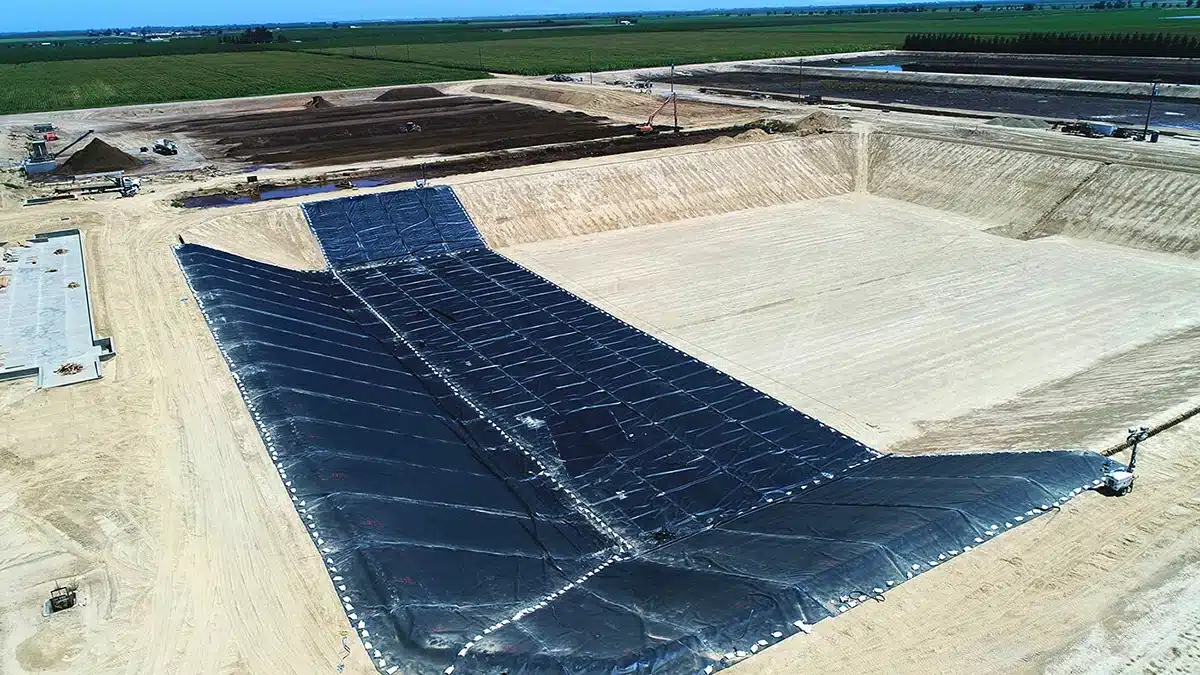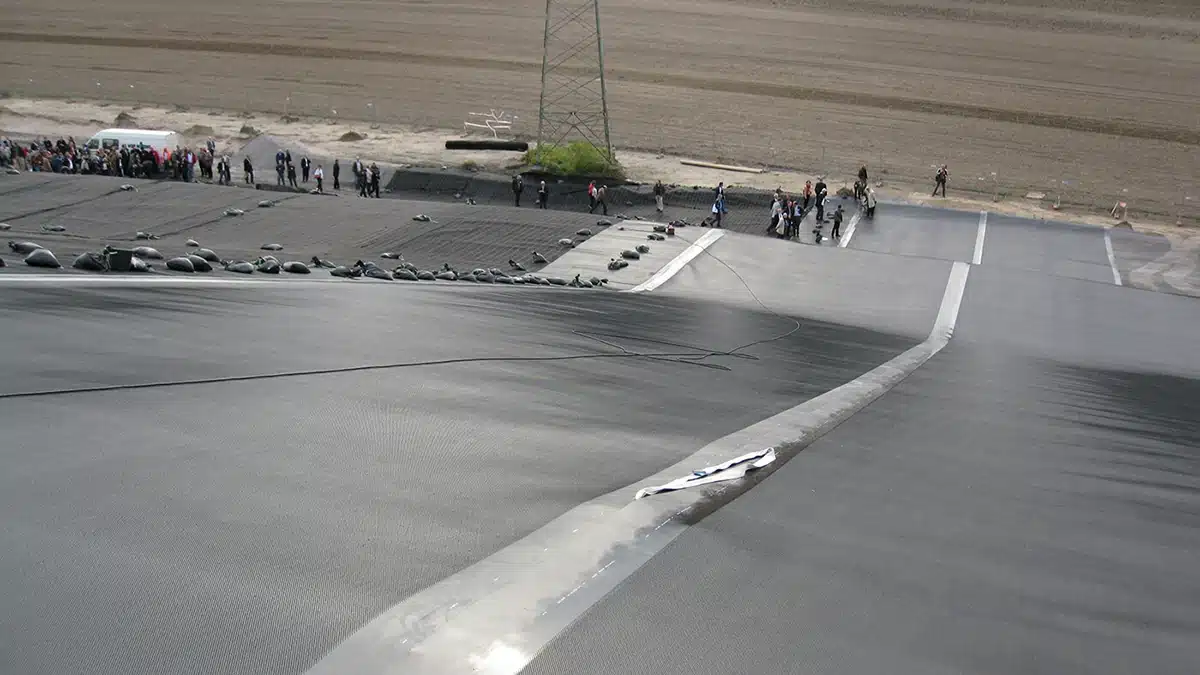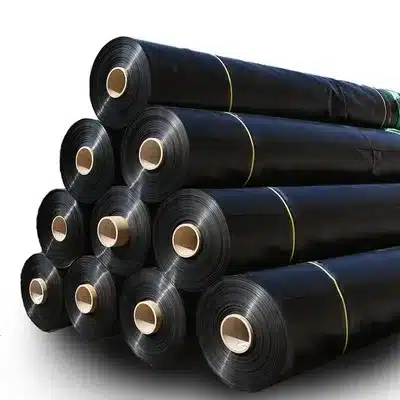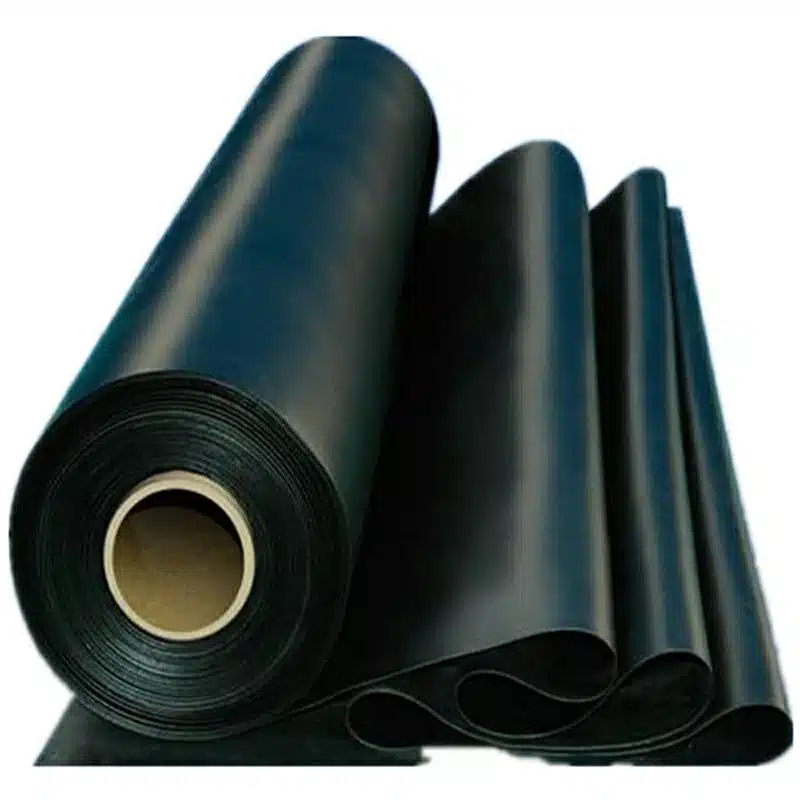+86-159 9860 6917
info@geofantex.com
geofantex@gmail.com
+86-400-8266163-44899
Geomembranes are critical components in modern engineering, offering unparalleled solutions for environmental protection and containment applications. A key aspect of ensuring their effectiveness and longevity is the shear test, a procedure designed to evaluate their resistance and performance under stress. Interestingly, it’s often observed that the geomembrane fails at the edge of the weld before the weld has not even been challenged to 10 – 30% of its desired strength. This phenomenon underscores the importance of meticulous attention to the quality of welding and installation practices. This article delves into the significance of shear testing on geomembranes, exploring its impact on their life expectancy, purposes, construction considerations, and thickness requirements, while highlighting the critical need for rigorous testing to prevent premature failure at the weld edges.

What is the life expectancy of a geomembrane?
The life expectancy of a geomembrane can vary significantly depending on the material composition, environmental conditions, and the level of exposure to UV radiation and chemicals. Generally, high-density polyethylene (HDPE) geomembranes are expected to last between 20 to 30 years, but with advancements in materials and protective treatments, the lifespan can extend to 20 to 50 years or more for certain specially treated geomembranes when properly installed and maintained. Regular shear testing and monitoring play a crucial role in predicting and potentially extending the lifespan of these essential barriers, ensuring they continue to perform their protective functions effectively over decades.
What is the purpose of a geomembrane?
Geomembranes serve a multifaceted purpose in environmental engineering and protection. Their primary function is to act as barriers to prevent the migration of liquids, gases, or contaminants into the environment, thereby protecting groundwater and surrounding ecosystems. Specifically, they are extensively used to stabilize earth and to secure landfills, ensuring containment of hazardous or municipal wastes and their leachates. This application, along with others such as water reservoirs and floating covers, highlights the versatility and effectiveness of geomembranes. Their indispensable role in applications ranging from landfill liners to the containment of hazardous materials makes them a cornerstone in efforts to mitigate environmental pollution.

What is the most important aspect of construction with geomembranes?
The most crucial aspect of construction with geomembranes is ensuring their integrity and proper installation, which is vital not only to secure containment but also to prevent water waste. This involves meticulous site preparation, including the removal of sharp objects and the installation of a protective geotextile layer to prevent punctures. The quality of the seams—where individual sheets of geomembrane are welded or fused together—is also paramount. A successful shear test confirms the strength and durability of these seams, ensuring that the geomembrane will perform as expected under operational stresses, effectively containing materials while also conserving valuable water resources.
How thick is a geomembrane?
You are a content editor. Please naturally integrate ” 0.5mm to 3.0mm” into the following paragraphs. The logic and semantics are smooth and the main idea of the paragraph remains unchanged:
The thickness of a geomembrane typically ranges from 0.75 to 3.0 mm, depending on its intended use, required durability, and the nature of the materials it will contain. Thicker geomembranes offer greater resistance to punctures and chemical degradation, making them suitable for applications involving sharp or abrasive materials, or highly reactive chemicals. However, the choice of thickness must also consider factors such as flexibility, ease of installation, and cost-effectiveness.
The shear test on geomembranes is a critical evaluation method that ensures these barriers are capable of withstanding the stresses they will face in their applications. Understanding the life expectancy, purpose, construction considerations, and thickness requirements of geomembranes allows engineers and environmental professionals to make informed decisions, ensuring the longevity and effectiveness of these essential environmental protection tools. As technology advances, ongoing research and development in geomembrane materials and testing methods will continue to enhance their performance and reliability, further solidifying their role in safeguarding our planet.



Get Free Sample
We’ll respond as soon as possible(within 12 hours)





















